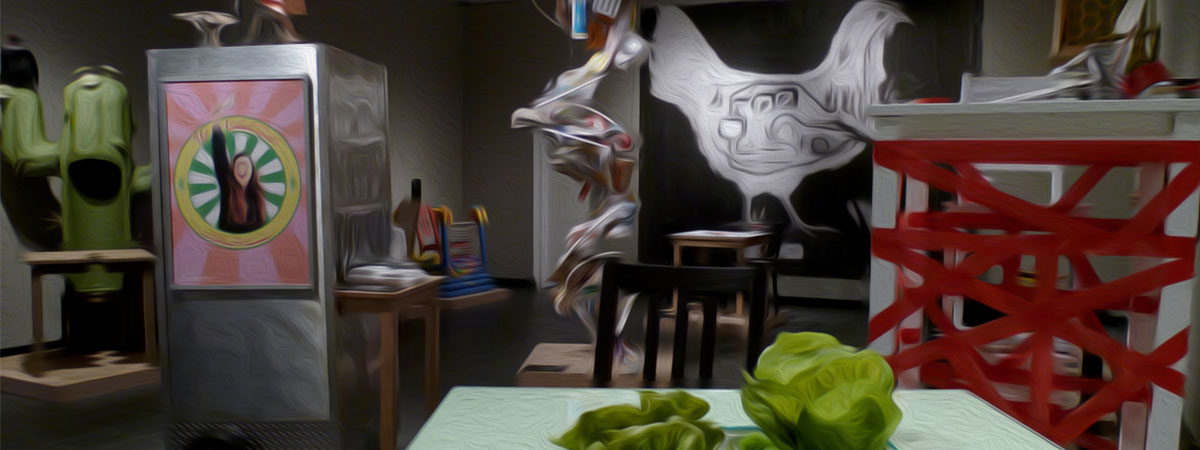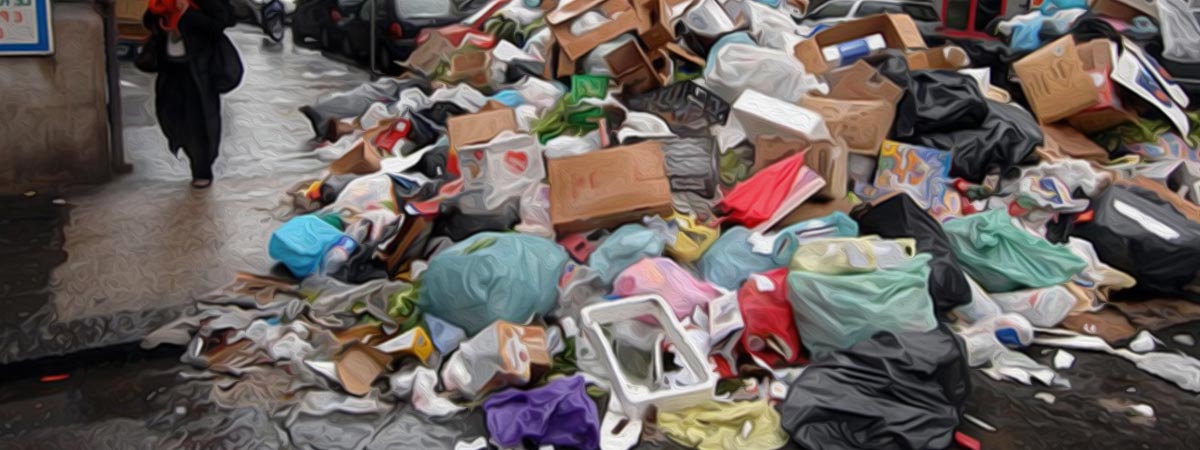Why give a damn:
Of all the forms that social innovation and social enterprise take around the world, we rarely think of art as one of them. But maybe we should. Art has the power to transform – perhaps far greater than the stuff we’ve been trying.
The author of this post, Cheryl Heller, designs change and growth for business leaders and social entrepreneurs. She is Founding Chair of MFA Design for Social Innovation at SVA.
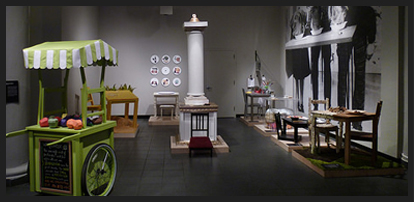
Last Friday, a gallery exhibit opened in New York for the express purpose of inspiring people to think differently about food, it’s safety and our relationship to it. The artists were the 25 first year students in the MFA Design for Social Innovation program at SVA in New York. Each student was given a wooden table (and chairs if they wanted them). Without changing the size or shape of the table, the assignment was to create a three-dimensional sculpture that represents food and a social issue of importance to them.
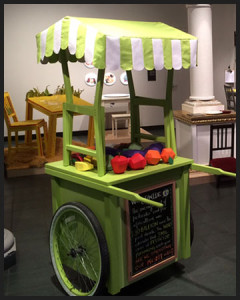 The work reflected the international perspectives of the artists who come from 12 different countries. And most of it had a wonderful sense of humor: A shrine to the “cronut” made a point of mocking our worship of fads and our fast food culture, a table turned into a faux foosball game illustrated the seemingly un-winnable mismatch between small farmers and big agriculture. Two pieces dealt with weight problems in obvious and subtle ways: one by literally making the table and chair “fat”, the other by weighing each person who sat down as a reminder of what it’s like to have anorexia. Another table illustrated the bureaucracy and red tape in India that keeps rice out of the mouths of the poor people who need it. And one Japanese student made her own small gallery of “last meals” as an eerie reminder of the death penalty. Not to mention a table grown from mushrooms (thank you Ecovative) and a customized Halal truck.
The work reflected the international perspectives of the artists who come from 12 different countries. And most of it had a wonderful sense of humor: A shrine to the “cronut” made a point of mocking our worship of fads and our fast food culture, a table turned into a faux foosball game illustrated the seemingly un-winnable mismatch between small farmers and big agriculture. Two pieces dealt with weight problems in obvious and subtle ways: one by literally making the table and chair “fat”, the other by weighing each person who sat down as a reminder of what it’s like to have anorexia. Another table illustrated the bureaucracy and red tape in India that keeps rice out of the mouths of the poor people who need it. And one Japanese student made her own small gallery of “last meals” as an eerie reminder of the death penalty. Not to mention a table grown from mushrooms (thank you Ecovative) and a customized Halal truck.
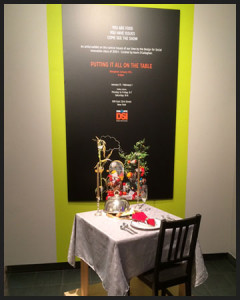 Food is a primary concern for everything that lives, regardless of where one is on the food chain. Food systems and food safety are central to social innovation – essential to solving issues of poverty, health, economics, justice and environment. “Putting it all on the table” is an expression that means to be completely transparent and forthright – in communication, it’s not holding back on the real issues.
Food is a primary concern for everything that lives, regardless of where one is on the food chain. Food systems and food safety are central to social innovation – essential to solving issues of poverty, health, economics, justice and environment. “Putting it all on the table” is an expression that means to be completely transparent and forthright – in communication, it’s not holding back on the real issues.
And art, as has been proven since the first caveperson picked up a Windsor and Newton sable-tooth tiger haired brush, has the power to transform – perhaps far greater than the stuff we’re trying now.
Unreasonable request:
Shut up and make art for a moment, see if it works.
Art has the power to transform – perhaps far greater than the stuff we’ve been trying. Tweet This Quote
*The exhibition features 25 artists from 12 countries: Elizabeth Abernathy, Covadonga Abril, Anna Luiza Braga, Rachel Dixon, Jenny Emmons, Carl Landegger, Ashley Larsen, Laura Kadamus, Gina Kim, Michelle Kwon, Meghan Lazier, Juno Lee, Xintong Liu, Akshata Malhotra, Pragya Mishra, Meryl Natow, Robin Newman, Kate Nicholson, Renzo Perez-Acosta, Swar Raisinghani, Rhea Rakshit, Haya Shaath, Maria Perez Tello, Yuka Uogishi and Liora Yuklea.
*Photos by Studio Payam
*The show is up until January 31st in New York City


